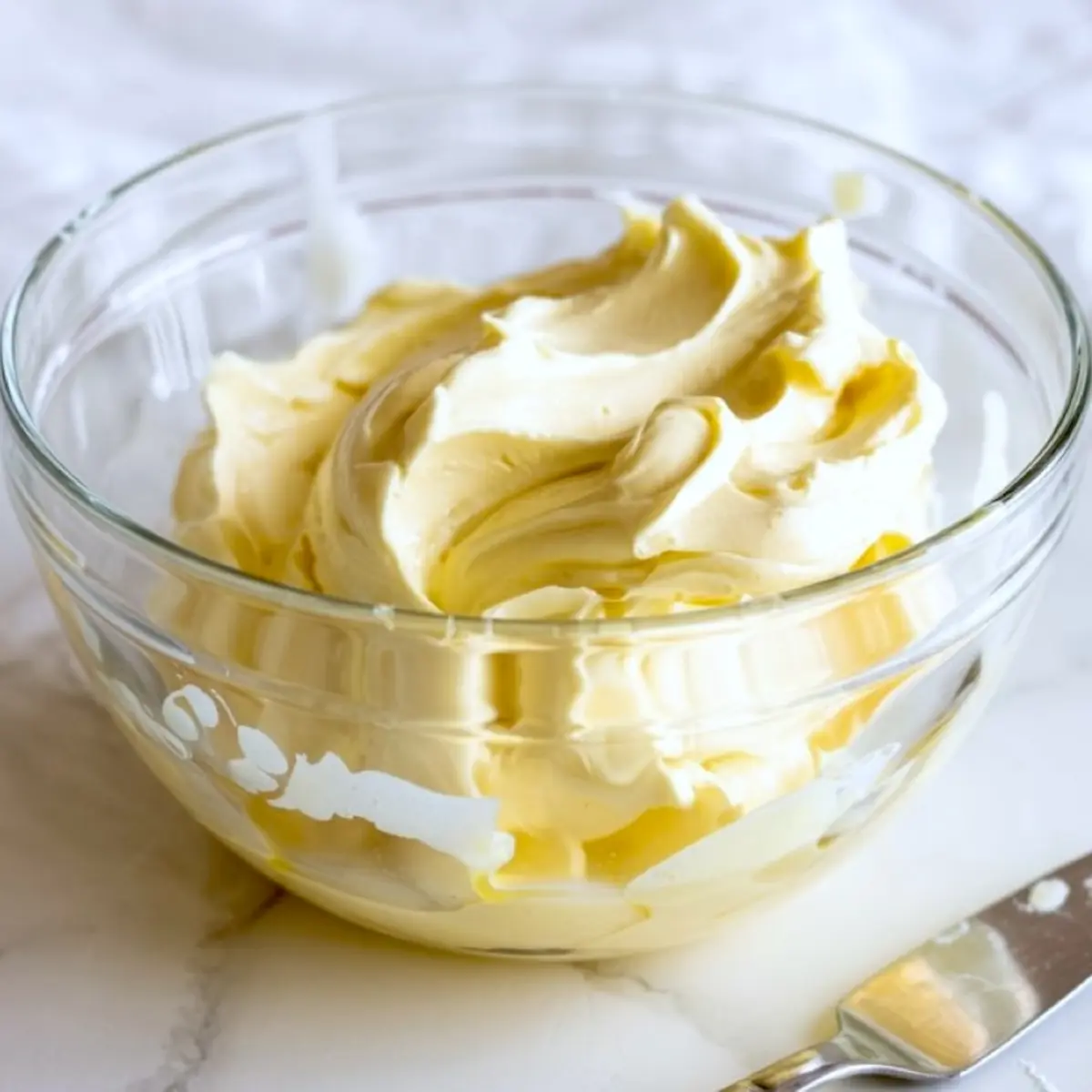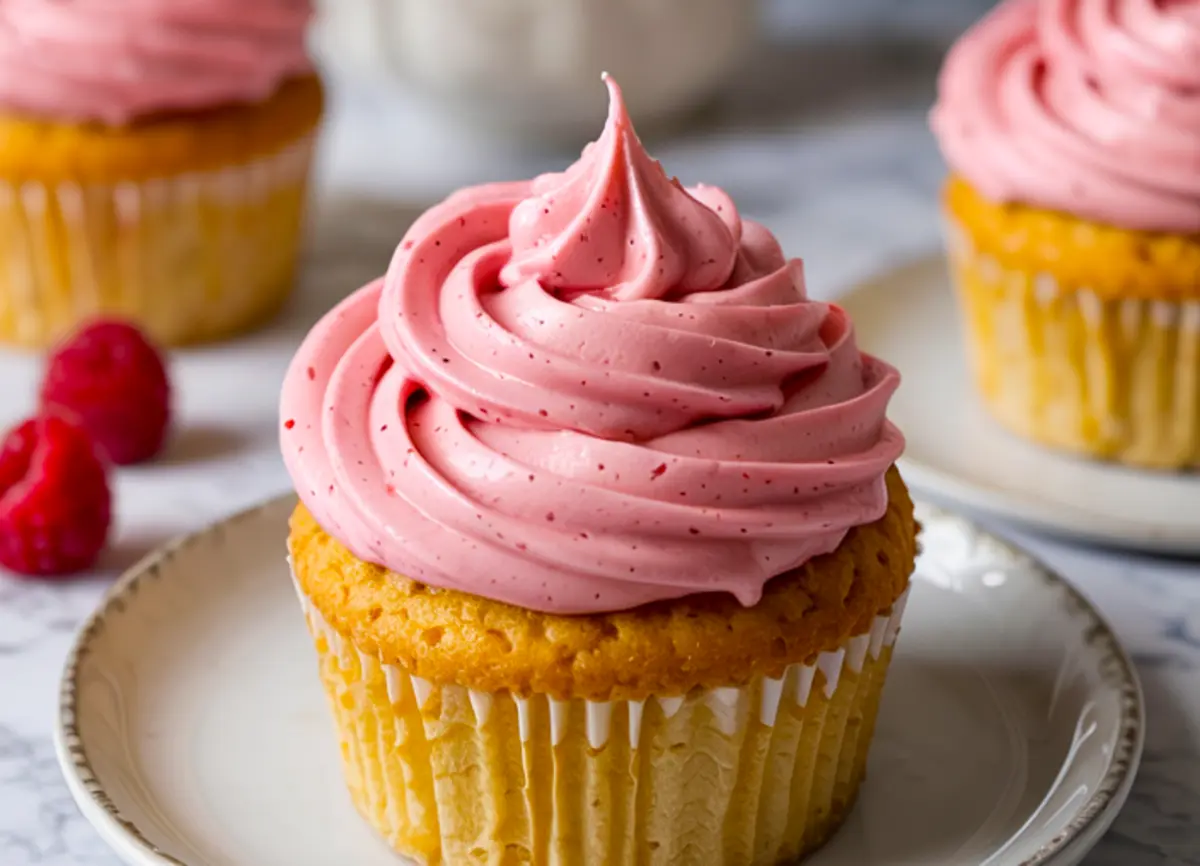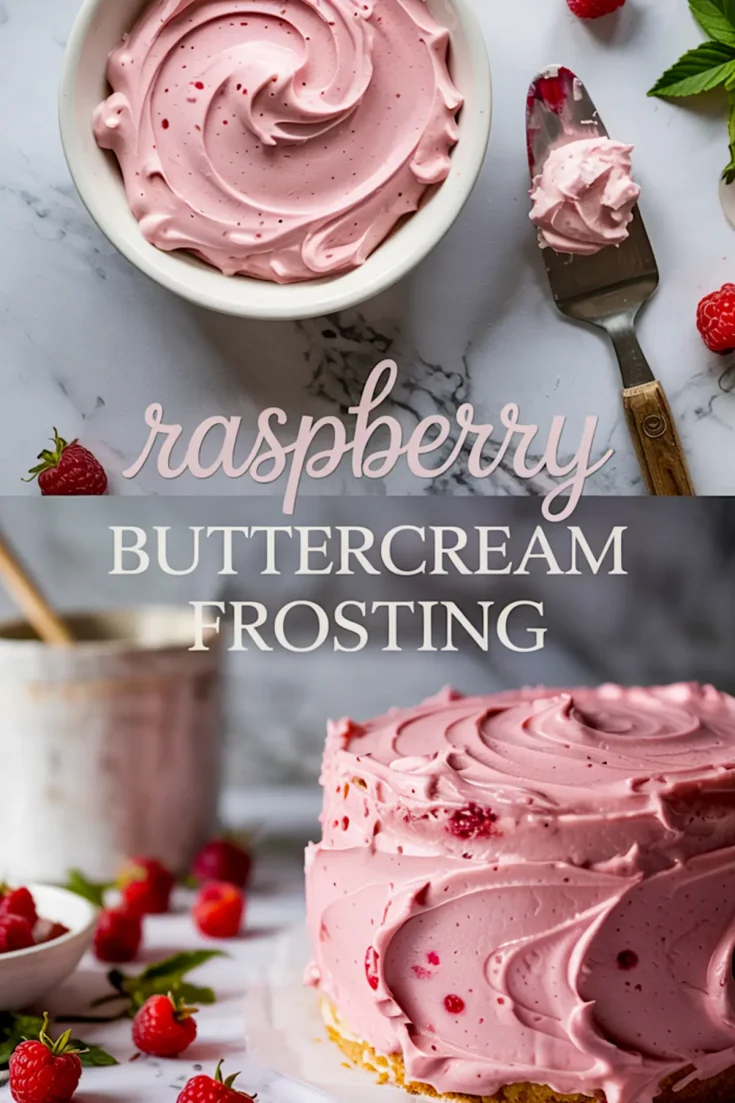This raspberry buttercream frosting takes the bold, tart sweetness of raspberries and wraps it in a soft, creamy cloud of whipped butter and sugar. It’s light, smooth, and stable enough to pipe, but what makes it stand out is the flavor. You’ll get the kind of berry punch that doesn’t rely on extract or artificial coloring. Every bite reflects the raspberries themselves.
You’ll learn how to create a frosting that keeps its shape, stays smooth, and complements everything from vanilla layer cakes to chocolate cupcakes. This recipe solves a common challenge too. Many versions of raspberry buttercream with frozen raspberries either separate or come out gritty. This one stays creamy. I’ve tested it more than a few times.

Why Frozen Raspberries Work Better Than Fresh Ones Here
Fresh raspberries are lovely, but frozen berries reduce more evenly. They hold their flavor through cooking and offer consistent results every time. In my notes, frozen berries produced a thicker, more vibrant reduction. That makes all the difference. It keeps the frosting firm enough to pipe.

Use raspberries straight from the freezer. Let the heat do the work. Just simmer gently, mash with a spoon, and strain out the seeds. You’ll be left with a tangy reduction that brings natural color and bold flavor.
How the Butter Should Feel Before You Begin

Temperature matters. You want unsalted butter softened to room temp but not melting. It should feel cool when pressed but leave a gentle fingerprint. If it’s too soft, your frosting might turn greasy. Too cold, and it won’t whip.
Give it a five-minute beat before adding sugar. This step builds structure. It creates that whipped texture that makes the frosting hold its shape on cakes.
Powdered Sugar Range: When to Add More or Less
I start with 3½ cups sifted powdered sugar. It keeps the frosting smooth and lump-free. If your raspberry reduction is extra juicy or you want a stiffer consistency for piping, increase to 4 cups.
If you prefer a lighter texture, stop at 3½ cups and add a touch of cream at the end. The final taste stays balanced without becoming too sweet.
Try this Vanilla Buttercream Frosting if you want a neutral base to highlight strong cake flavors.
Vanilla’s Role in a Fruit-Forward Frosting
A single teaspoon of vanilla brings depth. It doesn’t overpower, but it rounds out the sharp edge of the berries. I’ve tried leaving it out, but the flavor always feels incomplete. Pure extract works best. It ties the raspberry buttercream together.
A pinch of salt sharpens every flavor. Don’t skip it. Just a little helps the berries taste even more like themselves.
Raspberry Frosting vs. Strawberry Buttercream: Which Holds Better for Layer Cakes?
I’ve made both, and here’s the truth. Raspberry buttercream stays thicker. It has a more vibrant structure once chilled. Strawberry versions tend to hold more moisture and soften faster. If you’re planning a tall cake or want a raspberry cake filling between stacked layers, this one performs better.
Want to compare? Try this Strawberry Buttercream Frosting.
Steps That Keep This Frosting Stable for Piping

Once the raspberry reduction cools, blend it slowly into the butter and sugar mix. Pour it down the side of the bowl while mixing to avoid sudden separation. Let the mixer run for at least a minute after everything comes together. This brings air into the frosting and sets the structure.

If the consistency feels too stiff, one tablespoon of heavy cream helps. Add it slowly and keep mixing until it looks pillowy. Two tablespoons at most.
Also see this Maple Frosting for a thicker, spiced flavor option.
Storage Notes from My Kitchen
This frosting holds well in the fridge for up to three days. I store it in an airtight container, then let it come to room temperature before re-whipping. The color stays fresh, and the taste doesn’t dull.
If you’re frosting cupcakes ahead of time, pipe them, chill to set, and serve at room temperature. The texture improves as it softens.
Serving Ideas That Highlight the Raspberry

This works beautifully on lemon cake, vanilla sheet cakes, and even chocolate cupcakes. For a more playful touch, try piping it on sugar cookies. The natural color pops on white backgrounds.
As a raspberry cake filling, I spread it between thin sponge layers and add a touch of raspberry jam for contrast. It holds clean edges when sliced.
Love chocolate with berries? Try this Chocolate Buttercream Frosting.
Make It, Save It, Share It

This raspberry buttercream frosting blends clarity with flavor. The frozen raspberries give it consistency. The reduction adds color without dye. And the butter and sugar balance it all with softness and body.
Pin this recipe to your Frosting Recipes Easy or Raspberry Cake Filling boards so you don’t lose it.
If you try it, let me know in the comments. I always read them. Share what you used it on, or ask a question. I’m happy to help.
Raspberry Buttercream Frosting

Raspberry buttercream frosting blends softened butter with frozen raspberries, powdered sugar, and a splash of vanilla for a creamy, tangy finish. I strain the berries so the texture stays smooth, and the color turns out naturally bright without food dye. This raspberry frosting works beautifully on layer cakes, cupcakes, or as a raspberry cake filling. I’ve used it for birthdays and spring bakes, and it holds its shape for piping. If you’re after raspberry buttercream with frozen raspberries that doesn’t separate or go runny, this recipe delivers. It’s one of my go-to frosting recipes easy enough for any level of baker. Add it to your list of raspberry frosting recipe favorites or use it as a fruit-forward twist on classic buttercream.
Ingredients
- 1 cup (230g) unsalted butter, softened to room temperature
- 3 ½ to 4 cups (420–480g) powdered sugar, sifted
- ⅓ cup raspberry reduction (from fresh or frozen raspberries – see below)
- 1 tsp pure vanilla extract
- Pinch of salt
- Optional: 1–2 tbsp heavy cream, as needed for consistency
- FOR THE RASPBERRY REDUCTION
- 1 ½ cups fresh or frozen raspberries
- 1 tbsp water
- 1–2 tsp sugar, optional and to taste
Instructions
- MAKE THE RASPBERRY REDUCTION: Combine raspberries, water, and sugar (if using) in a small saucepan over medium heat. Cook for 5–7 minutes, stirring occasionally, until the berries break down and become juicy.
- STRAIN AND REDUCE: Pass the mixture through a fine mesh sieve to remove seeds, pressing with a spoon to extract as much liquid as possible. Return the strained liquid to the pan and simmer until thickened and reduced to about ? cup. Let cool completely before using in the frosting.
- BEAT THE BUTTER: In a stand mixer fitted with the paddle attachment (or using a hand mixer), beat the softened butter on medium-high speed for 3–5 minutes until pale and fluffy.
- ADD POWDERED SUGAR: Gradually add the sifted powdered sugar, one cup at a time, beating on low speed to incorporate before increasing to medium-high. Scrape down the bowl as needed for even mixing.
- ADD FLAVORINGS: Add the cooled raspberry reduction, vanilla extract, and a pinch of salt. Mix on medium speed until fully combined and the frosting is evenly tinted.
- ADJUST CONSISTENCY: If needed, add 1–2 tablespoons of heavy cream and beat for an additional 1–2 minutes until the frosting is smooth, fluffy, and pipeable.
Notes
For a more intense berry flavor, ensure the raspberry reduction is thick and fully cooled before adding to the buttercream. The frosting can be made ahead and stored in the refrigerator for up to 3 days. Bring to room temperature and re-whip before using.
Nutrition Information
Yield
1Serving Size
1Amount Per Serving Calories 1169Total Fat 79gSaturated Fat 49gTrans Fat 3gUnsaturated Fat 23gCholesterol 234mgSodium 277mgCarbohydrates 115gFiber 23gSugar 88gProtein 9g

